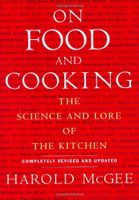Like cheese and wine, meat benefits from a certain period of aging, or slow chemical change, during which it gets progressively more flavorful. Meat also becomes more tender. In the 19th century, beef and mutton joints would be kept at room temperature for days or weeks, until the outside was literally rotten. The French called this mortification, and the great chef Antonin Carême said that it should proceed “as far as possible.” The modern taste is for somewhat less mortified flesh! In fact most meat in the United States is aged only incidentally, during the few days it takes to be shipped from packing plant to market. This is enough for chicken, which benefits from a day or two of aging, and for pork and lamb, which benefit from a week. (The unsaturated fats of pork and poultry go rancid relatively quickly.) But the flavor and texture of beef keep improving for a month or more, especially when whole, unwrapped sides are dry-aged at 34–38°F/1–3°C and at a relative humidity of 70–80%. The cool temperature limits the growth of microbes, while the moderate humidity causes the meat to lose moisture gradually, and thus become denser and more concentrated.


